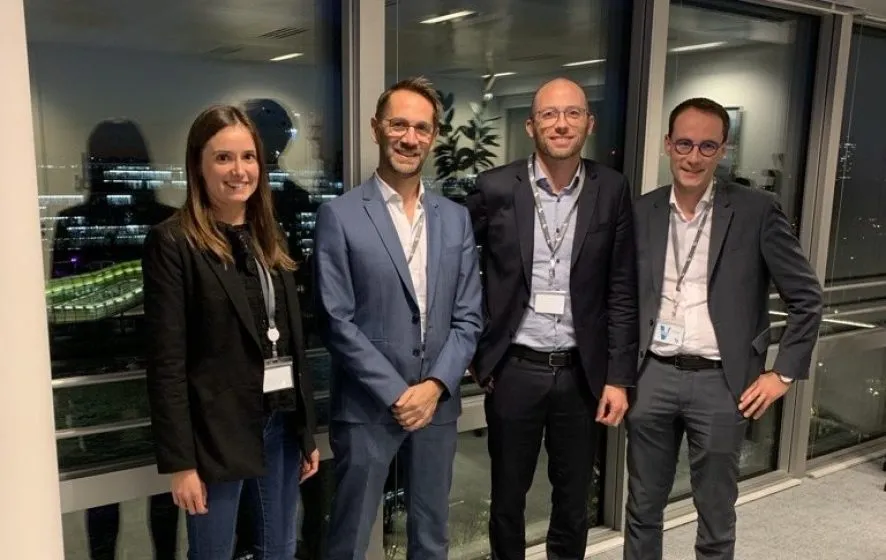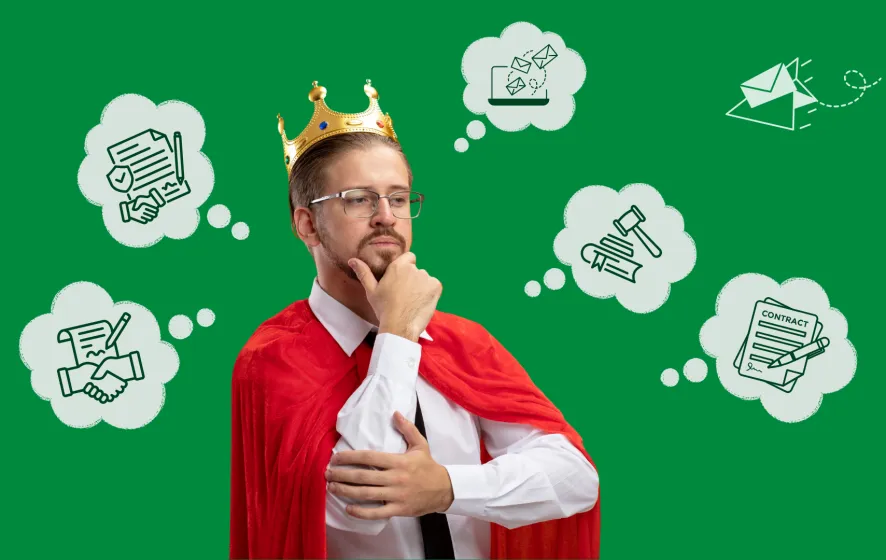

There is no doubt that group facilitation and collective intelligence techniques are highly beneficial to project management. These approaches offer several advantages. Firstly, they actively engage team members in the planning and decision-making processes, fostering commitment and motivation. Secondly, they leverage the diversity of viewpoints and experiences among contributors, generating innovative ideas and solutions tailored to project needs. Finally, they enhance communication and collaboration among project participants, strengthening group cohesion and solidarity.
While it might seem the project’s objectives are achieved, the team thrives, and everyone is happy, end of story.
End of story? There’s more to explore. Let’s delve deeper, if you agree.
In some corporate cultures, these tools are either absent or underutilized. How can they be introduced?
Sometimes, a work session can become unproductive and fail to meet its objectives. How can this be avoided?
With an abundance of ready-to-use “workshop sheets” on your employer’s “tools and methods” platform, selecting the right one can be overwhelming. How should you choose?
We propose to address these questions (and many others) by examining how to prepare and run a workshop. Finally, we’ll explore a selection of possible tools, ranging from the most classic to the most surprising, depending on the objective.
Workshop Objective
As a preliminary step in workshop preparation, it is crucial to define the objective. Is it to co-construct the project charter? Build the team? Plan the work? Identify risks? Improve a process? Build consensus? Achieve convergence? Create buy-in? Solve a problem?
The choice of objective significantly influences all other considerations. Without taking the time to define it, you risk choosing tools or participants that do not meet the actual need, potentially necessitating last-minute changes.
As the fine-tuning of objectives and tools is covered in the final part of this article, we’ll set it aside for now. Let’s just point out that the tools or animation techniques studied here don’t require any resources other than a facilitator, a big wall, markers and post-its.
Participation
The second essential point is participation. A few general rules emerge:
- Priority should be given to those involved in the project’s scope.
- Except for large-scale events like seminars, limit participants to around ten.
- Prefer two moderators: For example, one to encourage debate, the other to take notes and manage the agenda.
Other rules related to choice of invitees are more specific:
- For convergence, select participants who can convey the vision and challenges of their respective departments.
- For process improvement exercises like an agile retrospective, respect the intimate nature and avoid outsiders (managers, sponsors, experts) who might inhibit free expression.
- Ensure hierarchical presence if debates require arbitration, framework reminders, or past decision reviews.
Location, Agenda, Media: Logistical Considerations
The choice of workshop venue depends on the number of participants and their ability to meet physically in the same place at the same time. It is strongly constrained by logistical considerations. For large-scale events (seminars, SAFe PI planning, etc.), securing the venue well in several weeks or even months advance is highly recommended.
Given the value of participants’ time, the session agenda must be meticulously planned. Here are a few recommendations:
- For workshops aiming to produce extensive deliverables (project charters, risk analyses, resource management processes), divide the exercise into several modules, each achieving an intermediate objective (e.g., identifying risks, quoting them, creating action plans). These can be consecutive or spread over time (e.g., 1/2 day per week).
- For seminars with multiple workshops involving many people, account for travel time and configuration changes (e.g., from plenary sessions to group work) to ensure an effective agenda.
A final point not to be neglected is the arrangement of the materials needed for the event. Preparation of necessary materials, primarily large-format posters, is also crucial. These fall into two categories:
- Posters with visuals, graphics, and diagrams to inform participants.
- Posters designed to receive and organize the group’s ideas, questions, and impressions.
These materials, continuously visible to participants, facilitate exchanges by acting as reminders of past discussions.
A workshop, seminar, or agile ceremony cannot be improvised. As with any event, time invested in preparation is time well spent. Preparation also secures the event from an emotional point of view, since taking place “without a net” can generate nervousness or anxiety in facilitators and participants.
Depending on the workshop’s scope, a few preparatory meetings with a small team, including the customer/sponsor, the facilitator, and one or two stakeholders, are necessary.
Reassure and Include Participants
For a workshop to deliver expected value, participants need strong interaction. The facilitator’s first task is to create a secure environment for everyone to express themselves. This is achieved through the triptych of space, time, and rules, enabling participants to evolve and propose ideas without fear of judgment.
Establishing ground rules with participants at the session’s start is essential. Here are few examples:
- Listening actively and attentively to the ideas of other.
- Contributing equally and fairly to discussions or activities.
- Being open to feedback and constructive criticism.
- Etc.
These rules can evolve as the situation demands.
At this stage, however reassuring, our triptych lacks a little warmth. Participants are informed of what is expected of them, what they can and cannot do. But do they form a community? Not yet. The introduction to the session is therefore preceded or followed by an inclusion activity, otherwise known as icebreaker. While the number of variations on this exercise is virtually infinite, the intention is common: to lower tensions, apprehensions and connect with others. Here are a few examples:
- The colored ball: in a circle, pass a virtual colored ball around, then two, then three, without making a mistake.
- Who did what? Each person writes an anecdote anonymously, then the group tries to guess the author of each story.
- Stand in a line: everyone stands in a line on a scale, according to the distance it took them to get to the workshop, or how long they’ve been with the company.
Facilitate!
We’re now into the exercise. Depending on the tools chosen, we’ll have to create ideas, combine them, improve them, clarify them, estimate them, prioritize them – and often do all that at once!
This is the perilous moment when the moderator deploys his or her talent as a facilitator. Here are a few best practices we’d like to share with you, as compasses to guide the action:
- Always allow time for individual reflection, as this is a sine qua non for the richness and balance of the proposals.
- Don’t let the group get lost in totally open-ended topics. Prefer “What factors will reinforce X or Y?” rather “What will make the project work? Ideally, you should ask precise, non-divisive questions such as: “What are the project’s objectives?
- Encourage participants to be clear, to write clearly and to rephrase where necessary.
- Set aside time to take a step back and regroup ideas, enrich proposals, check consistency, involve introverts or explore new avenues.
At that price, and only at that price, can a common vision be built, transcending the experiences and fears of each one. Because what I see as complexity is not complexity for another participant and on the contrary, someone else can put on the table a complexity that I had not thought of.
A final point to bear in mind, it’s essential that the group endorses the outcome of the workshop.
To achieve this, the facilitator will welcome all ideas during the divergence phase of the workshop, and then help reformulate and prioritize them during the convergence phase, so that the whole team assumes responsibility for the result. Ideas judged not to have priority or to be too far removed from the question will be kept and mentioned in the minutes, thus ensuring the transparency of the exercise and recognition of contributions.
Acknowledging and Look Forward
At the end of the workshop, it’s time to acknowledge the work accomplished and explain its future use. Two scenarios may arise:
- Either it is a total co-construction, and the result is exploited as it is in the rest of the project.
- Or the workshop aims to produce elements “contributing to” an analysis, a deliverable, a roadmap, with the project manager allowing himself to retain only a part of the proposals regarding the constraints (means, deadlines, techniques) applied to the project.
The possibility of abandoning some of the reflections induces an obvious risk of frustration on the part of contributors. The facilitator or the informed sponsor will therefore apply the principle of maximum clarity on this point from the beginning of the process.
The Project Manager’s Survival Kit
It’s impossible to continue this article without mentioning tools. Below, we list two tools for each objective, as a starting point to be enriched by your research.
Defining a Desired End State
- Newspaper headlines: Think about the future of the company by predicting what the press might say.
- Sailing boat: find out what your goals are and what prevents you from achieving them.
Improving the Product
- Value Proposition: Clearly express the interest of your service/product, who it’s for and what makes it unique.
- Prototype Persona: Try to predict who will use the product and why, so that you can start designing and testing with the right people.
Framing the Project
- Problem statement: write a problem statement that captures the project’s objectives, problems and measurable success criteria.
- Stakeholder map: Identify your project’s stakeholders.
Generate Ideas
- Brainstorming: The great classic, with post-its.
- Crazy 8: Generate ideas in bulk. Eight crazy ideas in eight minutes!
Prioritize/Estimate
- Prioritization Matrix: Compare urgency vs. importance, impact vs. effort, risk vs. knowledge, etc.
- Planning Poker: Effort estimation based on the Fibonacci sequence.
Improve a Process
- KISS: Keep, Improve, Start, Stop.
- 4L Retrospective: Loved, Loathed, Longed for, Learned.
Fostering Ownership and Buy-In
- Market Place: Present your project to stakeholders through stands organized by major theme.
- Skills Market: Discover each other’s skills and ambitions to understand how to help each other grow.
Building Consensus
- 1, 2, 4, All: Generate and compare ideas in progressively larger groups and select the most promising.
- World Cafe: Generate and enrich ideas in small groups, changes tables regularly. Suitable for large groups.
Anticipating Risks
- Identify risks: Identify events that could have a negative impact on the achievement of project objectives. Determine their causes and consequences.
- Pre-mortem: Think of all the ways in which your project could go wrong, to improve its preparation.
Solving a Problem
- 5 Whys: Identify the root causes of your problem and don’t waste time on superficial issues.
- QQOQCCP: Analyze all facets of a problem with systematic questioning (Who? What? Where? When? How? How much? Why?).
Final Tips
Here are some final tips drawn from the field experience of our eocen and IPMC consultants, who apply them daily in a wide variety of environments – project, program, SAFe organization or corporate executive committee:
- The objective dictates the method!
- It’s possible and even desirable to combine techniques. Appropriation then consensus-building, Ideation then prioritization, etc.
- Prepare, prepare, prepare!
- A workshop should leave a lasting impression. Include time and original materials.
- A meeting must be followed up by action. Make the players responsible by drawing up a list of actions to be followed up, depending on the context, by the project manager, Scrum Master or PMO.
- Group meetings influence the emotional maturity of the team. Be aware of this… and use this tool wisely!
Now you’re ready for the adventure. We wish you every success with your workshop and hope to see you soon on your current project or the one to come!
Weiterführende Informationen


